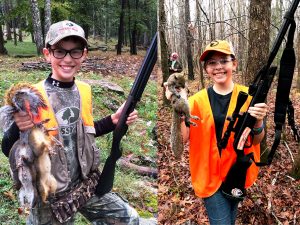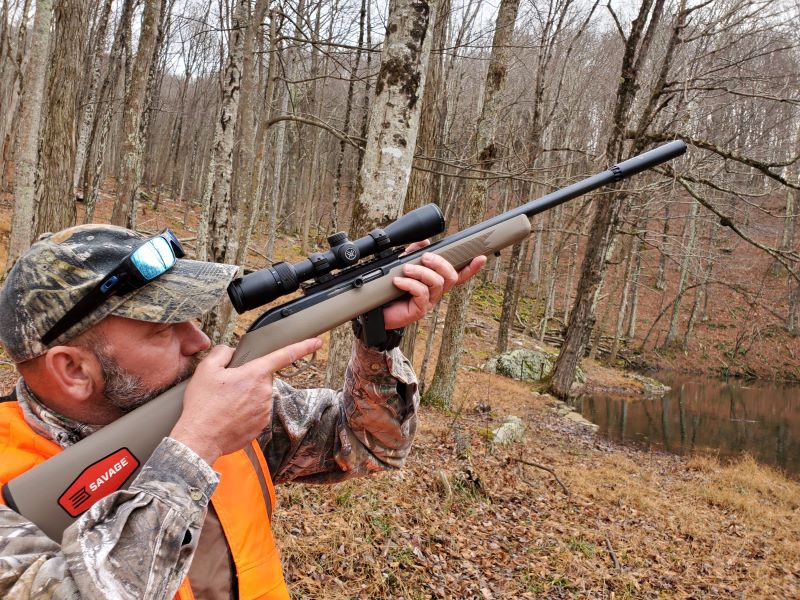I’ve been a squirrel hunter for most of my life. In some parts of the country, hunters think that is an odd statement. They didn’t grow up hunting squirrels and it’s not part of their hunting culture. In my part of the world, the southern Appalachian Mountains, there was a time when most young hunters started out squirrel hunting. The squirrel woods are where we learned how to be hunters. It’s where we learned all the basic skills needed to hunt everything from bushytails to greater kudu, and you can, too.
Squirrel hunting was made for new and first-time hunters. You can hunt them almost everywhere. Any forested area is likely to hold squirrels. East of the Mississippi, there is an estimated 384 million acres of woodland. A lot of this is on public land like National Forest and state wildlife management areas. As for private land, many times, landowners will give you permission to squirrel hunt when they might not for deer or turkeys. Expensive leases are not required to be a squirrel hunter.
The Woodland Classroom
If you are a new hunter or just new to squirrel hunting, think of the forest as your classroom. You are going to learn a lot here and have a lot of fun doing it! So, what might be some of the basic skills you will learn to be successful on squirrels and other critters?
The basic premise of just sitting still is ground zero for hunting squirrels and many other game animals. Sitting quietly and observing your surroundings without being seen or heard is the first thing squirrels will teach us. In good squirrel territory, sometimes, this is all we do. If there is available food and you have seen squirrels in this area before, try to move in quietly and find a place to sit and observe. Many hunters will not move even when they have fired the first shot, especially if they are using a .22 rifle. Make sure the squirrel is down, remember the location, and continue your quiet sit. Other squirrels may stir soon after the shot.
The second chapter in the sitting still lesson is patience. All hunters must learn patience when watching for various animals. In observing other hunters over many years, I have seen the full gamut of this. Some hunters have it from the start and seem content to sit and watch for long periods with no problems. For others, they must learn to sit without fidgeting, moving, and making noise.

Make no mistake; if you move too much or excessively crunch leaves, you will not see as many squirrels. This is as good a time as any to mention you will be hunting wild squirrels and not the ones you see in the park begging for peanuts. Wild squirrels are a target for most any predator in the woods. Hawks, owls, bobcats, coyotes, foxes, and others are all trying to have them for dinner. The squirrel lives by his wits, speed, and agility, and he is a master at detecting motion and sound. Every bowhunter in the eastern United States has been harassed by squirrels while sitting in a tree stand and believes they can kill a sack full of squirrels any day of the week. Do I need to say it all changes when you are actually hunting squirrels and not deer?
The next skill you will learn is to move quietly through the woods. Still-hunting, or spot-and-stalk as some call it, is just a fun way to hunt squirrel or any game. If you get tired of sitting and need to move to a new area, this is what you do.
First, slow down! Pick a spot, a tree, or other destination within 75 yards or so and see how slowly and carefully you can get there. In some areas of the south, this is called “slip” hunting, as you are trying to “slip up” on the squirrel. Most of the time, the conditions will be dry, with crunchy leaves that will test your ninja skills to the max. That is part of the fun. You will quickly learn to slow down your steps and movements.
In dry conditions, the trick to reducing noise is focusing on each step. As you extend your foot for the next step, slowly—ever so slowly—push down and compress the dry leaves until you reach firm footing. If you feel a stick under your foot, let off the pressure and try to push it to the side or step over it. Lightweight boots help with this, and some of us have even been known to remove boots and stalk the last several yards in stocking feet.

Besides all the stalking and tactical skills, squirrels will teach you other basics that every hunter should know. Learning to find and recognize the food that game animals need is essential to any hunter. If you think about it, much of what a wild animal does every day is walk around and look for something to eat. This goes for deer, bear, turkeys, and squirrels. Squirrels will establish a home range, especially if it is centered around a good den tree—usually an older, large tree that has hollow places that squirrels can get into. This is the bomb-proof shelter squirrels will run to when all else fails and may be the sleeping quarters during bad weather.
Squirrels will stay in this area if there is food, but remember, if the food runs out, the squirrels will leave. During times of widespread mast failure, huge migrations of squirrels have been noted—often involving hundreds, if not thousands of squirrels. It can be anything from this scale to squirrels in a local area moving a short distance to find food. The point is, if there aren’t any groceries in the area, they will change their zip code.
In my neck of the woods, the squirrel’s neighborhood is mostly oak- and hickory-based. There are lots of other foods they may take advantage of, like maple seeds, dogwood, walnuts, and others, but acorns from the various species of oak trees are what gets most of our game through the winter. This goes for squirrels as well as deer, bear, and turkeys. Find the food and you will find the game. In the early fall, squirrels will usually concentrate on hickory nuts and will often clean them out in the early season. Squirrels will quickly move on to any available acorns and, like deer, they prefer white oak acorns before they settle for other, more bitter tasting acorns like those of the red oaks. Learning to identify these trees and any other available food sources will boost your success as a squirrel hunter.
Squirrel Hunting Doesn’t Require a Lot of Special Gear
If you have a .22 rifle or a shotgun and a pair of boots, you are ready to go squirrel hunting. Camo clothing may help but is not absolutely necessary. Wear your old jeans and a sweatshirt. Turkey vests are a great way to carry squirrels and whatever gear you chose to take, and they often come with a seat cushion. A small game or bird vest is also handy.
Any .22 rifle that you can shoot accurately out to 50 yards will do as well as most any shotgun, and you don’t necessarily need a 12-gauge and three-inch magnum shells; a 20-gauge will do fine, or even a .410 for the younger hunters.

It’s True…Squirrels are Very Tasty
Those who have never squirrel hunted may give you funny looks when it comes to talking about cooking and eating squirrels, but it has always been my favorite wild game. You can use almost any recipe that you might use for chicken or any small game but to me, there is only one way to cook a squirrel—fried.
After carefully cleaning and cutting up the squirrel into pieces, break down the front legs, back legs, and the back portion. Either parboil the pieces or pressure cook them to make sure they are tender. The pieces are then rolled in your favorite seasoned flour and fried golden brown. Usually, gravy is made in the skillet after you remove the squirrel parts. I know I am partial to this method because this is the way my Mom fixed them. Many old-time squirrel hunters will say there is only one way to serve squirrel and that is with biscuits and gravy. This may be true. If you haven’t tried it (and I feel for you if you haven’t), you will have to find out for yourself!
Squirrel Hunting is Just Plain Fun
In case you didn’t know, hunting is supposed to be fun. I wonder if all this time and work obsessing about how big a deer’s antlers are has made us stray from the true path in hunting. Enjoying a day in the woods, roaming at will, taking in all the sights and sounds and smells of the forest have been forgotten by many of us. How about the frequency of opportunities to take game? How many times will you actually pull a trigger or fling an arrow during a typical deer season? Once? Twice? A good day in the squirrel woods may offer numerous shot opportunities. I have never taken anyone on their first squirrel hunt who did not say they had fun.
The woods are there and the squirrels are there. What are you waiting for?





